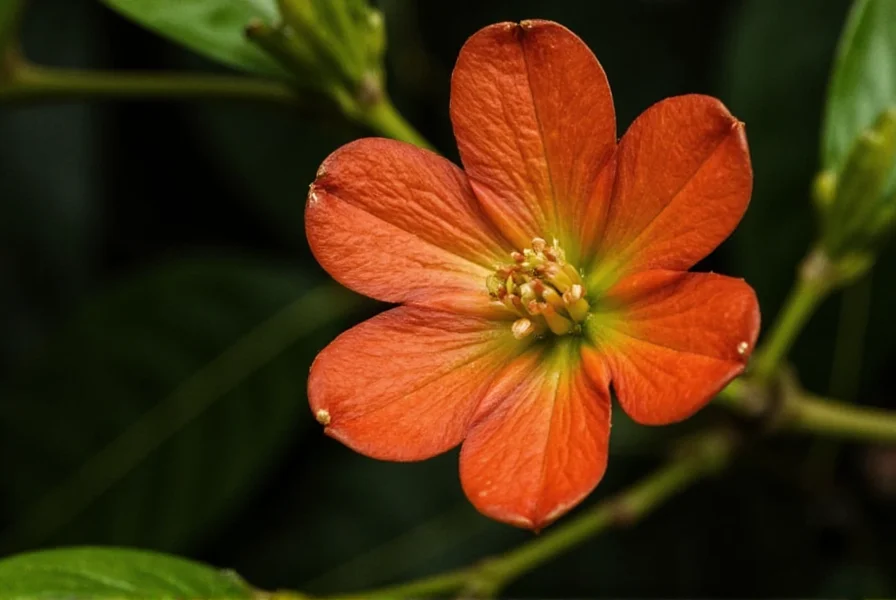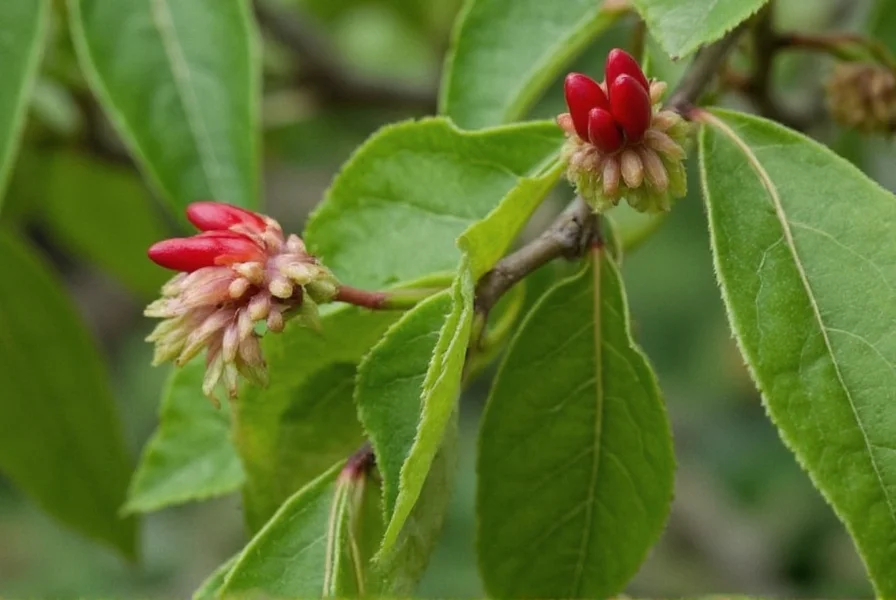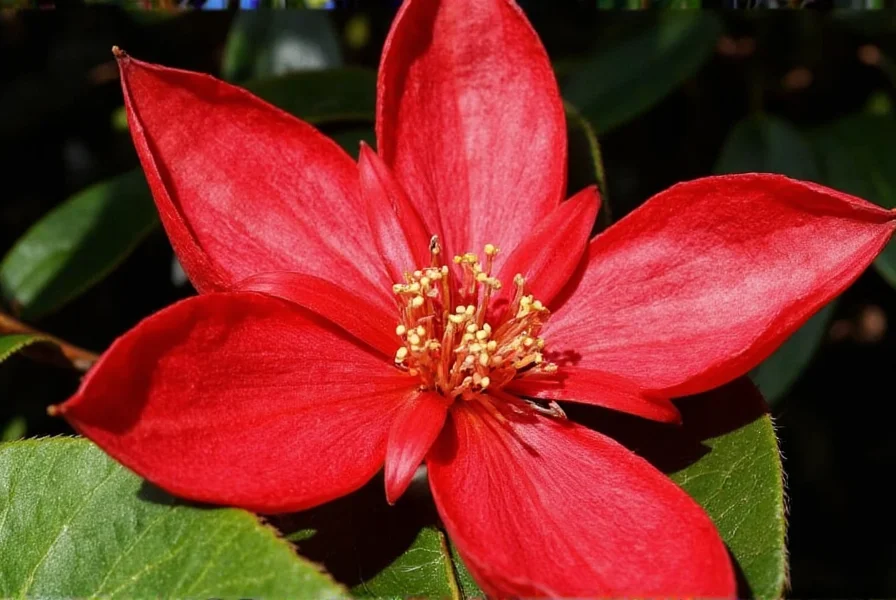Illicium verum is the scientific name for Chinese star anise, a distinctive star-shaped spice derived from the fruit of a small evergreen tree native to Southwest China and Vietnam. This aromatic spice contains anethole as its primary compound, giving it a sweet licorice-like flavor used globally in culinary and traditional medicine applications.
When you encounter the botanical term illicium verum in scientific literature or product labels, you're reading the precise identification for what most people know as star anise. This evergreen tree of the Schisandraceae family produces the familiar eight-pointed star-shaped fruits that have been seasoning kitchens and apothecaries for centuries. Unlike its toxic cousin Illicium anisatum (Japanese star anise), illicium verum is safe for culinary use when properly identified and processed.
Botanical Classification and Origin
Illicium verum belongs to the ancient Illiciaceae family, with fossil records dating back 125 million years. Native to the subtropical forests of Southwest China and Northern Vietnam, this small tree typically grows 6-15 meters tall with glossy evergreen leaves. The tree produces delicate white or pink flowers that develop into the characteristic star-shaped fruits approximately 2.5-4 cm in diameter.
Commercial cultivation occurs primarily in China's Guangxi province, which produces over 90% of the world's supply, along with significant harvests in Vietnam, India, and Indonesia. The fruits are harvested just before ripening when still green, then sun-dried until they transform from green to rusty brown. This drying process concentrates the essential oils that give illicium verum its distinctive aroma and flavor profile.
Chemical Composition and Flavor Profile
The primary compound responsible for illicium verum's characteristic flavor is anethole (80-90% of essential oil content), which creates that familiar sweet licorice taste. Additional compounds include:
| Compound | Percentage | Contribution |
|---|---|---|
| Anethole | 80-90% | Sweet licorice flavor |
| Limonene | 2-5% | Citrus notes |
| α-Pinene | 1-3% | Pine-like aroma |
| Estragole | 1-2% | Additional herbal notes |
This unique chemical profile makes authentic illicium verum indispensable in Chinese five-spice powder, Indian garam masala, and Vietnamese pho broth. Professional chefs distinguish high-quality illicium verum by its deep reddish-brown color, intact star points, and strong aromatic release when crushed.

Culinary Applications Worldwide
Chefs globally utilize illicium verum for both flavor and functional properties. In Chinese cuisine, it's essential for red-cooked dishes and braises, where its compounds help tenderize proteins. Indian kitchens incorporate it into biryanis and chai blends, while French pastry chefs use it in subtle amounts for certain fruit compotes and liqueurs.
When using whole illicium verum in cooking, professional chefs recommend:
- Adding early in the cooking process to fully extract flavors
- Removing whole stars before serving (they're too hard to eat)
- Lightly toasting before grinding for maximum flavor release
- Storing in airtight containers away from light to preserve essential oils
Traditional and Researched Health Applications
Traditional Chinese Medicine has employed illicium verum for over 3,000 years to address digestive issues and respiratory conditions. Modern research has investigated several potential benefits:
- Digestive support: Compounds in illicium verum may stimulate digestive enzymes and reduce bloating
- Antimicrobial properties: Laboratory studies show effectiveness against certain bacteria and fungi
- Antioxidant activity: Contains shikimic acid, a precursor to oseltamivir (Tamiflu)
- Anti-inflammatory effects: Preliminary research suggests potential for reducing inflammation markers
It's crucial to note that while these properties show promise in laboratory settings, illicium verum should not replace medical treatment. The FDA considers it Generally Recognized As Safe (GRAS) for culinary use, but therapeutic applications require professional medical guidance.
Safety Considerations: Distinguishing Authentic Illicium Verum
The most critical safety concern with illicium verum involves misidentification with Illicium anisatum (Japanese star anise), which contains toxic compounds that can cause severe neurological symptoms. Key differences include:
- Point shape: Illicium verum has smooth, rounded points; Japanese star anise has sharper, more irregular points
- Color: Authentic illicium verum is reddish-brown; toxic varieties often appear more reddish-purple
- Smell: Proper illicium verum has sweet licorice aroma; toxic varieties may smell musty or unpleasant
- Taste: Authentic has sweet flavor; toxic varieties taste bitter

Reputable suppliers implement strict quality control to prevent contamination. When purchasing illicium verum, choose whole stars from established spice merchants rather than pre-ground powder, which is more easily adulterated.
Storage and Selection Guidelines
To maximize the shelf life and potency of illicium verum, follow these professional recommendations:
- Purchase whole stars rather than pre-ground powder for better flavor retention
- Select stars with 7-8 intact points and uniform reddish-brown color
- Store in airtight glass containers away from heat and light
- Properly stored illicium verum maintains peak quality for 2-3 years
- Check for aroma strength periodically - fading scent indicates diminished quality
Ground star anise loses potency significantly faster than whole stars. For maximum flavor impact in recipes, lightly toast whole illicium verum in a dry pan before grinding. This process releases additional volatile compounds that enhance the spice's characteristic flavor profile.











 浙公网安备
33010002000092号
浙公网安备
33010002000092号 浙B2-20120091-4
浙B2-20120091-4